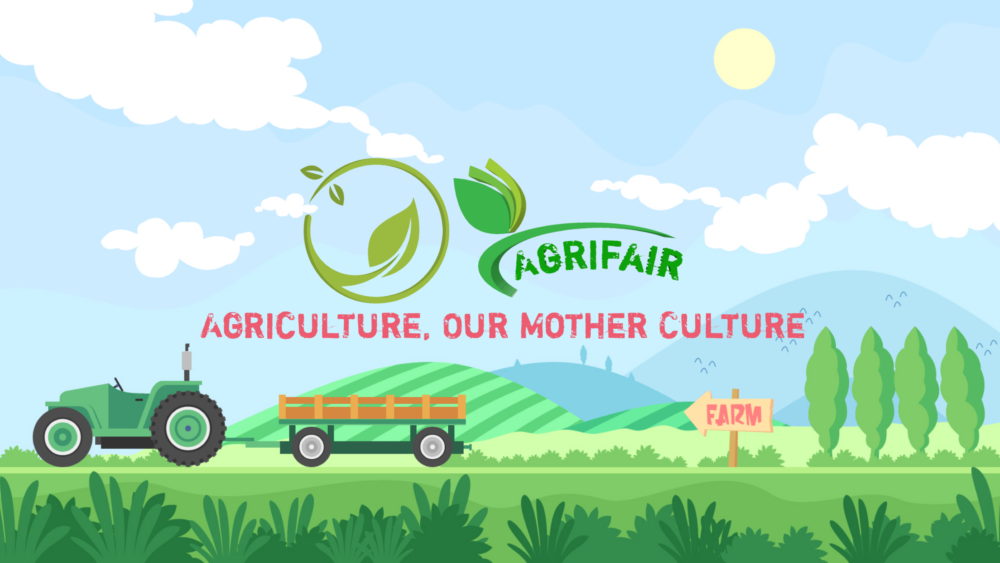Maximizing Food Production with Aquaponics: A Sustainable Solution
Aquaponics is a sustainable and innovative method of growing plants and fish together in a closed-loop system. The technique is gaining popularity worldwide as an efficient and eco-friendly way of producing healthy and fresh food in limited space. Aquaponics combines hydroponics, which is growing plants in nutrient-rich water, and aquaculture, which is rearing fish in a controlled environment. In this article, we will discuss the basics of aquaponics, its benefits, types of aquaponics systems, and how to set up an aquaponics system.

What is Aquaponics?
Aquaponics is a sustainable food production system that combines hydroponics and aquaculture in a symbiotic relationship. The system involves growing plants in nutrient-rich water, which is then circulated to fish tanks. The fish produce waste, which is converted by beneficial bacteria into nitrates and other nutrients that are used by plants to grow. The plants, in turn, clean the water, which is then returned to the fish tank, completing the cycle.
Aquaponics is a closed-loop system, meaning it requires very little water and has a minimal environmental impact. It is an efficient and sustainable way of producing food, especially in urban areas where space is limited.
You may like this Saguna Rice Technique
Benefits of Aquaponics
There are several benefits of aquaponics, both for the environment and the growers. Here are some of the most significant advantages:
Sustainable and Eco-Friendly
Aquaponics is a sustainable and eco-friendly method of food production. It uses very little water compared to traditional farming methods and requires no harmful chemicals or pesticides. Additionally, aquaponics produces no waste, as the fish waste is converted into nutrients for the plants.
High Yields
Aquaponics systems can produce high yields of both fish and plants. The plants grow faster and produce more food compared to traditional farming methods. Additionally, the fish grow faster and are healthier due to the controlled environment.
Versatile
Aquaponics systems can be set up in various locations and configurations. They can be built indoors or outdoors, in greenhouses or warehouses, and can be adapted to any size, making them suitable for both small-scale and large-scale production.
Cost-Effective
Aquaponics can be a cost-effective way of producing food. While initial setup costs can be high, the long-term benefits of lower water usage, reduced labor costs, and increased yields can outweigh the initial investment.
You may like this Hydroponics: The Future of Agriculture
Types of Aquaponics Systems
There are several types of aquaponics systems, each with its advantages and disadvantages. Here are the most common types of aquaponics systems:
Deep Water Culture (DWC)
Deep Water Culture, also known as Raft Aquaponics, is the simplest and most common type of aquaponics system. In DWC, plants are grown in rafts that float on top of the water in the fish tank. The plants’ roots are submerged in the nutrient-rich water, allowing them to absorb the nutrients they need to grow. DWC is easy to set up and maintain, making it an ideal option for beginners.
Nutrient Film Technique (NFT)
The Nutrient Film Technique is another common type of aquaponics system. In NFT, plants are grown in channels that are slightly tilted, allowing a thin film of nutrient-rich water to flow over the roots. NFT systems require less water than DWC systems but can be more complicated to set up and maintain.
Media-Based Aquaponics
Media-Based Aquaponics is a system in which plants are grown in a soilless medium, such as gravel, perlite, or coconut coir. The medium provides support for the plants and helps to filter the water. Media-based systems are easy to set up and maintain and can produce high yields, but they require more water than DWC and NFT systems.
Vertical Aquaponics
Vertical Aquaponics is a type of aquaponics system in which plants are grown vertically, stacked on top of each other. The system uses gravity to circulate the water and nutrients between the fish tank and the plants. Vertical aquaponics systems are space-efficient and can be set up indoors or outdoors.
Hybrid Aquaponics
Hybrid Aquaponics systems combine different types of aquaponics systems to create a custom design that suits specific needs. Hybrid systems can be built using any combination of DWC, NFT, media-based, or vertical aquaponics systems.
You may like this Aeroponics: The Future of Sustainable Agriculture
How to Set Up an Aquaponics System
Setting up an aquaponics system can be a bit challenging, but it is a rewarding and fulfilling experience. Here are the basic steps to set up an aquaponics system:
Choose a Location
The first step in setting up an aquaponics system is choosing the right location. The location should have access to electricity, water, and a suitable space for the system. Consider factors such as sunlight, temperature, and humidity when selecting a location.
Choose the Type of System
The next step is to choose the type of aquaponics system you want to set up. Consider your goals, available space, and budget when selecting the type of system.
Build or Purchase the System
Once you have chosen the type of system, you can either build it yourself or purchase a pre-made system. Building the system yourself can be more cost-effective, but it requires more time and effort. Purchasing a pre-made system can be more expensive, but it is easier and quicker to set up.
Install the System
After building or purchasing the system, it is time to install it. Follow the instructions carefully and make sure that all the components are properly installed.
Add Fish and Plants
Once the system is installed, it is time to add the fish and plants. Start with a few fish and gradually increase the number as the system stabilizes. Choose plants that are suitable for the system and provide enough nutrients for the fish.
Monitor and Maintain the System
Aquaponics systems require regular monitoring and maintenance to ensure that they function correctly. Monitor the pH, temperature, and nutrient levels of the system and make adjustments as necessary. Regularly clean the system, prune the plants, and feed the fish.
Conclusion
Aquaponics is an innovative and sustainable way of producing fresh and healthy food. It combines hydroponics and aquaculture in a closed-loop system that requires very little water and has a minimal environmental impact. Aquaponics systems can be set up in various locations and configurations, making them suitable for both small-scale and large-scale production. While initial setup costs can be high, the long-term benefits of lower water usage, reduced labor costs, and increased yields can outweigh the initial investment. By following the steps outlined in this article, you can set up an aquaponics system and enjoy the benefits of fresh and healthy food production.



Pingback: Cultivation: A Journey Through the Different Methods of Growing Crops - AgriFair